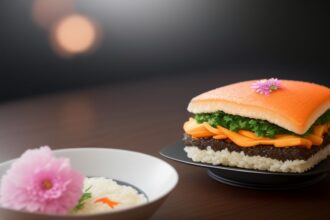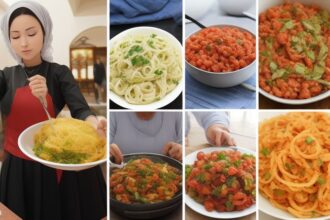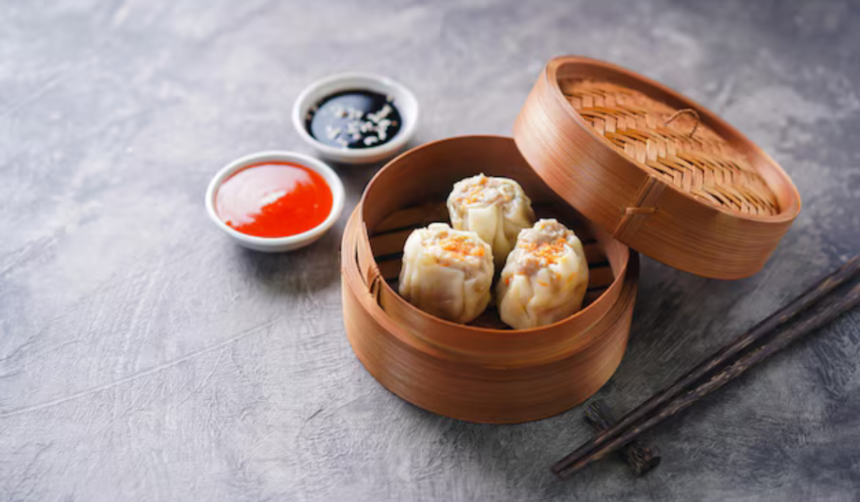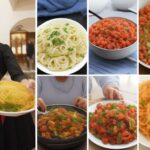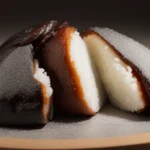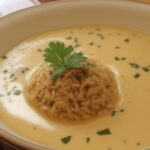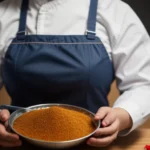From Dumplings to Dim Sum: A Culinary Journey Through Chinese Cuisine
Introduction
Chinese cuisine is renowned worldwide for its bold flavors, diverse ingredients, and intricate cooking techniques. From street food vendors serving up steaming bowls of noodles to elaborate banquet dishes fit for a king, Chinese cuisine encompasses a wide range of dishes that cater to every palate. One of the most popular and beloved aspects of Chinese cuisine is its dumplings and dim sum. These bite-sized morsels of goodness are enjoyed by people of all ages and are a staple in Chinese households and restaurants alike. In this article, we will take a culinary journey through the world of Chinese dumplings and dim sum, exploring their history, ingredients, preparation methods, and most importantly, their delicious flavors.
The History of Chinese Dumplings and Dim Sum
Dumplings have been a part of Chinese cuisine for centuries, with some historians tracing their origins back to the Han Dynasty (206 BCE – 220 CE). Originally, dumplings were made with a simple flour and water dough, filled with minced meat, vegetables, or seafood, and then steamed or boiled. Over time, dumplings evolved to include a wider variety of fillings and cooking methods, with each region in China developing its own unique style of dumplings. Dim sum, on the other hand, is a more recent addition to Chinese cuisine, with its roots in the southern provinces of Guangdong and Fujian. Dim sum is a style of small dishes served alongside tea, typically eaten for breakfast or brunch. These dishes can range from savory dumplings to sweet pastries and are often enjoyed with family and friends in a communal setting.
The Ingredients of Chinese Dumplings and Dim Sum
Dumplings and dim sum are incredibly versatile dishes that can be made with a wide range of ingredients, depending on the region and the cook’s preferences. Some of the most common fillings for dumplings include pork, shrimp, chicken, beef, and a variety of vegetables such as cabbage, carrots, and mushrooms. Seasonings like soy sauce, ginger, garlic, and sesame oil are often used to flavor the fillings, adding depth and complexity to the dish. The dough for dumplings can be made with a simple mixture of flour and water, or with the addition of eggs, oil, and even rice flour for a lighter texture. Dim sum dishes also incorporate a variety of ingredients, including seafood, tofu, and rice, with a focus on fresh, seasonal produce and bold flavors.
The Preparation Methods of Chinese Dumplings and Dim Sum
The preparation of Chinese dumplings and dim sum requires a certain level of skill and precision, as each dish must be carefully crafted to ensure that the filling is perfectly cooked and the dough is soft and tender. For dumplings, the dough is typically rolled out into small circles, filled with the desired filling, and then pleated and sealed to create a pouch-like shape. The dumplings can then be steamed, boiled, or pan-fried, depending on the desired texture and flavor. Dim sum dishes are often more elaborate, requiring the use of special molds and techniques to create intricate designs and shapes. Steaming is a common cooking method for dim sum, as it allows the flavors to meld together and the ingredients to cook gently without losing their texture or flavor.
Regional Variations of Chinese Dumplings and Dim Sum
Chinese cuisine is incredibly diverse, with each region in China boasting its own unique culinary traditions and flavors. This diversity is reflected in the variety of dumplings and dim sum dishes found throughout the country. In the northern regions of China, dumplings are typically larger and heartier, filled with robust ingredients like lamb, pork, and cabbage. These dumplings are often served with a dipping sauce made from soy sauce, vinegar, and chili oil, adding a spicy kick to each bite. In the southern provinces, dim sum reigns supreme, with delicate dumplings filled with shrimp, scallops, and crab meat, and steamed to perfection. These dishes are often accompanied by a pot of fragrant tea, creating a harmonious balance of flavors and textures.
Popular Dumplings and Dim Sum Dishes
Some of the most popular dumplings and dim sum dishes in Chinese cuisine include xiao long bao, har gow, siu mai, and char siu bao. Xiao long bao, also known as soup dumplings, are small pouches of dough filled with pork and a savory broth, creating a burst of flavor with each bite. Har gow are delicate shrimp dumplings wrapped in a translucent rice flour skin, steamed to perfection and served with a side of soy sauce. Siu mai are open-faced dumplings stuffed with a mixture of pork, shrimp, and mushrooms, topped with a dollop of roe or crab meat. Char siu bao are sweet and savory buns filled with barbecued pork, creating a contrast of flavors that is both comforting and satisfying. These dishes are just a few examples of the diverse range of dumplings and dim sum that Chinese cuisine has to offer.
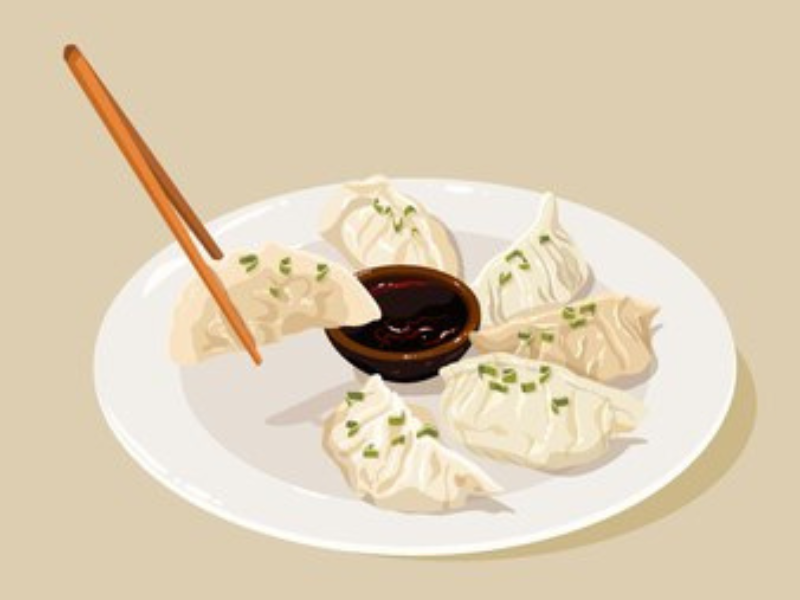
The Art of Eating Dumplings and Dim Sum
Eating dumplings and dim sum is an art form in itself, requiring a delicate balance of flavors, textures, and techniques. When enjoying dumplings, it is important to savor each bite, taking in the flavors of the filling and the dough, as well as the accompanying sauces and condiments. Dim sum is traditionally eaten with a pot of fragrant tea, which helps to cleanse the palate between dishes and enhance the flavors of the food. When dining on dim sum, it is customary to share dishes with others at the table, creating a sense of community and connection through food. The act of sharing and enjoying food together is an integral part of Chinese culture and is a testament to the importance of food in bringing people together.
The Health Benefits of Dumplings and Dim Sum
Despite their reputation for being indulgent and calorie-laden, dumplings and dim sum can actually be quite nutritious when prepared with fresh, wholesome ingredients. Dumplings are often filled with lean proteins like chicken, shrimp, and tofu, as well as an array of vegetables that provide essential vitamins and minerals. The dough for dumplings can also be made with whole wheat flour or rice flour for a healthier alternative to traditional white flour. Dim sum dishes are typically steamed or lightly sautéed, rather than fried, which helps to preserve the nutrients and flavors of the ingredients. By enjoying dumplings and dim sum in moderation and choosing dishes that are made with high-quality ingredients, you can indulge in these delicious treats without sacrificing your health.
The Cultural Significance of Dumplings and Dim Sum
Dumplings and dim sum hold a special place in Chinese culture, serving as a symbol of unity, prosperity, and celebration. Dumplings are often served during traditional festivals and holidays, such as Chinese New Year and the Mid-Autumn Festival, as they are believed to bring good luck and fortune to those who eat them. The act of making dumplings together with family and friends is a cherished tradition that has been passed down through the generations, fostering a sense of connection and shared heritage. Dim sum is also steeped in tradition, with its origins dating back to the teahouses and restaurants of southern China. This style of dining has become an integral part of Chinese culinary culture, with dim sum often served on weekends and special occasions as a way to celebrate and enjoy good food with loved ones.
The Evolution of Chinese Cuisine
Chinese cuisine is constantly evolving, with chefs and cooks around the world putting their own spin on classic dishes and creating new and innovative flavors. The popularity of dumplings and dim sum has led to a resurgence of interest in traditional Chinese cooking techniques, inspiring a new generation of chefs to explore the rich culinary heritage of China. In recent years, dumplings and dim sum have gained international acclaim, with restaurants and food stalls around the world serving up their own versions of these beloved dishes. This global appreciation for Chinese cuisine has helped to raise awareness of the diverse flavors and ingredients that make up this vibrant and dynamic culinary tradition.
The Future of Chinese Dumplings and Dim Sum
As Chinese cuisine continues to gain popularity and influence around the world, the future of dumplings and dim sum looks brighter than ever. Chefs and cooks are constantly experimenting with new flavors and ingredients, creating innovative twists on classic dishes that appeal to modern tastes. The rise of plant-based and vegetarian diets has also inspired a new wave of dumplings and dim sum made with meat alternatives and plant-based fillings, offering a healthier and more sustainable option for diners. Whether you prefer traditional pork and shrimp dumplings or modern takes on classic dim sum dishes, there is no doubt that Chinese cuisine will continue to captivate and inspire food lovers for generations to come.
Conclusion
From humble beginnings as simple dough pouches filled with meat and vegetables to elaborate dim sum feasts served alongside fragrant tea, Chinese dumplings and dim sum have captured the hearts and palates of food lovers around the world. With their bold flavors, diverse ingredients, and intricate preparation methods, dumplings and dim sum are a testament to the rich culinary heritage of China and the artistry of its cooks and chefs. Whether you enjoy steamed dumplings in a cozy neighborhood eatery or indulge in a lavish dim sum brunch with friends and family, there is no denying the allure and appeal of Chinese cuisine. So the next time you find yourself craving a taste of the exotic and the familiar, why not embark on a culinary journey through the world of Chinese dumplings and dim sum and discover the flavors and traditions that have captivated diners for centuries.
FAQs about “From Dumplings to Dim Sum: A Culinary Journey Through Chinese Cuisine”
- What makes “From Dumplings to Dim Sum: A Culinary Journey Through Chinese Cuisine” a standout among Chinese cookbooks? “From Dumplings to Dim Sum” offers a comprehensive exploration of Chinese cuisine, focusing on the rich tapestry of flavors found in dumplings and dim sum. It provides an immersive culinary journey through the diverse regions and culinary traditions of China.
- Which dishes and culinary traditions are highlighted in this book? This book showcases a wide variety of dumplings and dim sum, ranging from traditional classics like xiaolongbao and shumai to lesser-known regional specialties. It also delves into the cultural significance, history, and techniques behind these beloved Chinese dishes.
- Are the recipes in “From Dumplings to Dim Sum” suitable for home cooks of all skill levels? Yes, “From Dumplings to Dim Sum” caters to cooks of all skill levels, offering recipes that range from simple and beginner-friendly to more advanced and intricate. Whether you’re new to Chinese cooking or a seasoned chef, you’ll find recipes that are accessible and easy to follow.
- How does this book provide insights into the regional diversity of Chinese cuisine? This book celebrates the regional diversity of Chinese cuisine by showcasing dumplings and dim sum from various provinces and cities across China. Readers will discover the unique flavors, ingredients, and cooking techniques that distinguish each regional style.
- Can readers expect to learn about the cultural and historical background of Chinese dumplings and dim sum in this book? Absolutely! “From Dumplings to Dim Sum” delves into the cultural and historical significance of dumplings and dim sum in Chinese culinary tradition. Readers will gain insights into the origins, symbolism, and evolution of these iconic Chinese dishes, as well as the customs and rituals associated with their preparation and consumption.
Advantages:
- Intriguing title: “From Dumplings to Dim Sum” is catchy and evokes interest, suggesting a culinary exploration through the diverse offerings of Chinese cuisine.
- Culinary diversity: Chinese cuisine is known for its vast array of dishes, flavors, and cooking techniques, offering readers a rich and diverse culinary experience to explore.
- Cultural immersion: The title implies a journey through Chinese culinary traditions, providing readers with insights into the culture, history, and regional differences of Chinese cooking.
- Gastronomic adventure: Readers can anticipate discovering a variety of Chinese dishes, including dumplings and dim sum, as well as other regional specialties, offering them a comprehensive overview of Chinese cuisine.
- Inspiration for cooking: The title may inspire readers to try cooking Chinese dishes at home, providing them with recipes, tips, and techniques to recreate the flavors of China in their own kitchens.
Disadvantages:
- Lack of specificity: While dumplings and dim sum are highlighted, the title does not specify which other aspects of Chinese cuisine will be explored or which regions will be covered, potentially leaving readers uncertain about the scope of the content.
- Potential oversimplification: Focusing solely on dumplings and dim sum may oversimplify the richness and diversity of Chinese cuisine, overlooking lesser-known but equally delicious dishes and culinary traditions.
- Accessibility of ingredients: Some Chinese dishes may require specific ingredients that are difficult to find outside of China or major culinary hubs, limiting the practicality of the recipes for some readers.
- Dietary restrictions: Chinese cuisine often includes ingredients like meat, seafood, and soy, which may not be suitable for individuals with dietary restrictions or preferences, potentially alienating some readers.
- Potential cultural appropriation: Without proper context and understanding, exploring Chinese cuisine could risk appropriating cultural elements without acknowledging their significance or respecting their origins.



